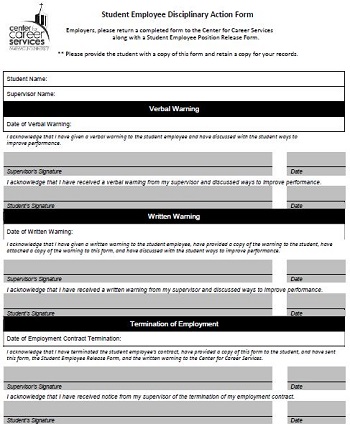
Effectively managing employee behavior and maintaining a productive work environment is crucial for the success of any organization. For that purpose, the disciplinary action form template is a document used by employers to record and document incidents of employee misconduct or performance issues. When employees violate company policies, display misconduct, or demonstrate unsatisfactory performance, it becomes crucial for employers to address these issues through a disciplinary process. Browse our collection to utilize pre-designed employee disciplinary action form templates available in PDF and Word formats.
Table of Contents
A disciplinary action form, also known as an employee discipline form or an employee write-up form, is a document used by employers to record and document incidents of employee misconduct or performance issues. Free employee disciplinary action form templates offer a practical solution to streamline the disciplinary process, ensuring proper documentation and adherence to established procedures. By utilizing an employee disciplinary action form template, organizations can effectively address disciplinary issues while promoting fairness, accountability, and consistency in their disciplinary procedures.


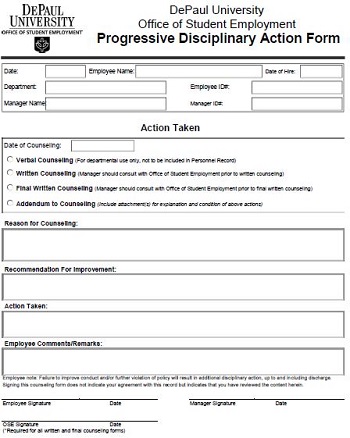
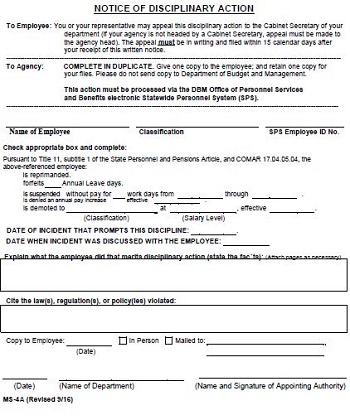
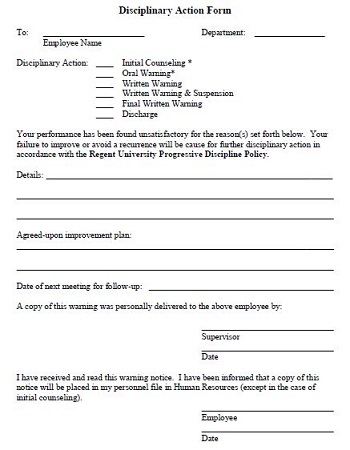
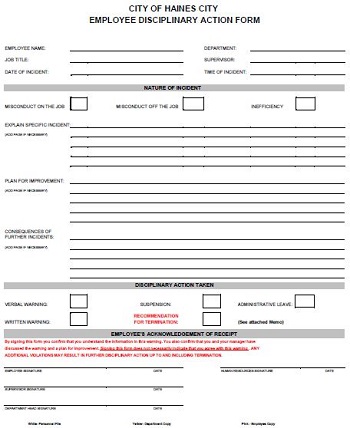
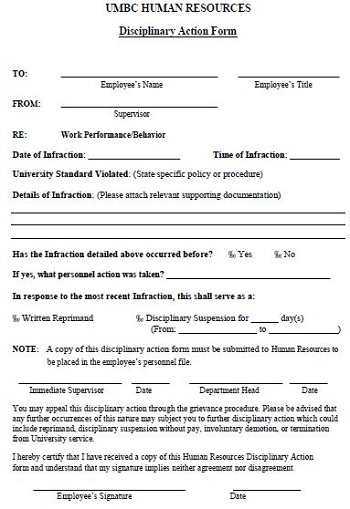
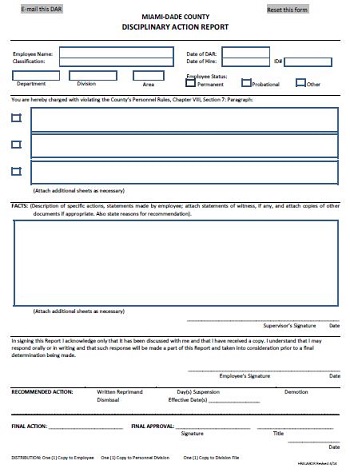
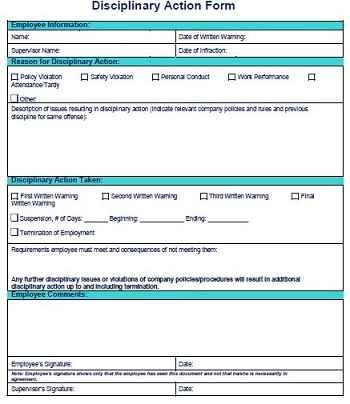
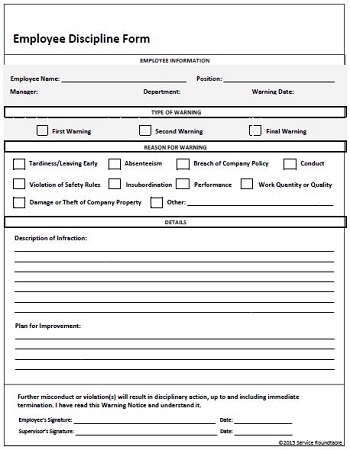

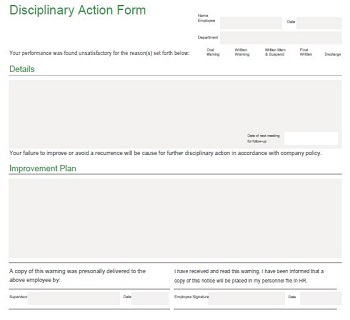
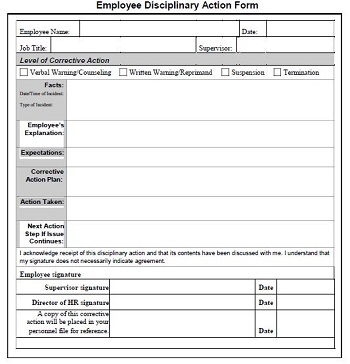
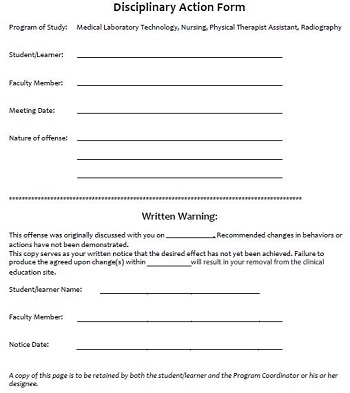

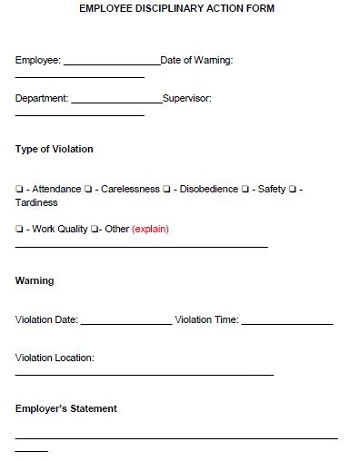
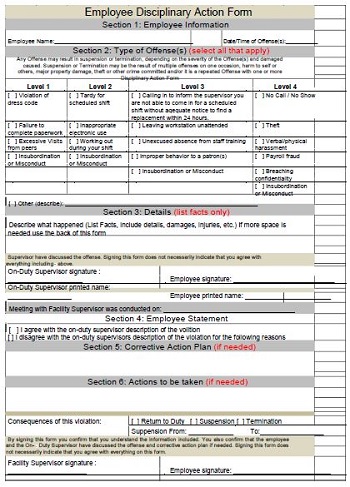


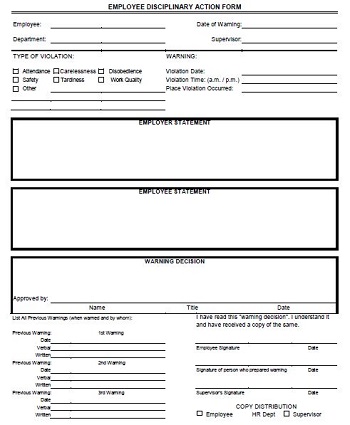
Employee disciplinary action forms are vital documents used by employers to record and address employee misconduct or performance issues in a formal and structured manner. These forms serve as a record of disciplinary incidents, documenting the details of the offense, the actions taken by the employer, and any subsequent consequences. A disciplinary action form outlines what behavior is expected, details the consequences of employee misconduct, and helps to protect against potential legal issues.
Employee disciplinary action involves identifying the problem, conducting investigations if necessary, and taking appropriate measures to address the behavior or performance concern. The purpose of disciplinary action is not only to correct the immediate issue but also to provide employees with an opportunity to improve and align their actions with organizational expectations. By implementing a fair and consistent disciplinary process, employers can maintain a positive work culture, uphold standards, and encourage employee growth and development.
Employee disciplinary action forms typically consist of several key components that help structure and document the disciplinary process. By understanding these components, organizations can effectively document and manage disciplinary incidents, promote fair and compliant practices, and maintain a productive work environment. Here are the common components found in these forms:
Each organization may have its own variations or additional sections in its disciplinary action forms based on its specific policies and procedures. However, these components provide a comprehensive structure for recording and documenting the key elements of disciplinary action. They ensure consistency, fairness, and compliance throughout the disciplinary process.
Disciplinary action forms are important for many reasons. Primarily, they provide a standardized process for dealing with any workplace issues that might arise. With a set process in place, it will be easier to resolve any conflicts quickly, fairly, and consistently across all areas of the business. Disciplinary action forms play a vital role in managing employee behavior, promoting fairness, and ensuring accountability within an organization. Here are key reasons why disciplinary action forms are important:
Disciplinary action forms provide a formal and written record of disciplinary incidents, including details of the misconduct or performance issues, actions taken, and consequences imposed. They serve as evidence of the organization’s efforts to address and rectify employee misconduct, providing a clear record for future reference and potential legal purposes.
By using disciplinary action forms, organizations establish transparent and consistent processes for addressing employee misconduct. These forms outline the specific policies or standards violated, ensuring clarity on the expectations set by the organization. They also promote fairness by documenting consistent disciplinary measures and consequences applied to similar incidents or behaviors.
Disciplinary action forms help organizations comply with employment laws and regulations. They demonstrate that disciplinary actions were taken in accordance with established policies and procedures, protecting the rights of both employees and employers. In the event of legal disputes or claims, well-documented disciplinary action forms serve as crucial evidence of the organization’s adherence to legal requirements.
Disciplinary action forms are essential tools in the performance management process. They enable managers to address employee behavior or performance issues promptly and consistently. These forms help identify patterns of misconduct, track disciplinary actions taken, and facilitate decision-making regarding further corrective measures or termination if necessary.
Disciplinary action forms, when used constructively, can promote employee development and growth. By documenting incidents and the resulting disciplinary actions, organizations create opportunities for employees to understand their areas of improvement, learn from their mistakes, and take steps toward corrective action. When coupled with feedback and guidance, disciplinary action forms can contribute to the professional development of employees.
Implementing disciplinary action forms demonstrates an organization’s commitment to maintaining a positive work environment, ethical conduct, and adherence to policies and values. These forms communicate that inappropriate behavior or poor performance will be addressed promptly, reinforcing a culture of accountability and professionalism.
Disciplinary action forms provide a reference point for future decisions regarding an employee’s performance or behavior. They assist in evaluating the effectiveness of previous disciplinary actions and determining appropriate next steps. These forms also help inform management decisions on issues such as promotions, transfers, or terminations based on an employee’s disciplinary history.
Disciplinary action forms should be used whenever an employer has taken formal action against an employee due to misconduct or poor performance on their part. In most cases, this is done after an initial verbal warning from management. Disciplinary action forms are used in situations where an employee’s behavior or performance falls short of the organization’s expectations and requires corrective action. Here are common scenarios when disciplinary action forms are typically used:
It is important to note that disciplinary action forms should be used as part of a fair and consistent disciplinary process, adhering to company policies and legal requirements. They should aim to address behavior or performance concerns constructively, providing employees with an opportunity to improve and align their actions with the organization’s expectations.
In conclusion, the employee disciplinary action form template is an invaluable resource for organizations seeking to effectively manage employee behavior, maintain a productive work environment, and ensure legal compliance. By utilizing these templates, employers can streamline the disciplinary process, promote consistency and fairness, and provide clear documentation of disciplinary incidents and actions taken. These forms contribute to performance management, legal compliance, and employee development. By implementing disciplinary action form templates, organizations can navigate disciplinary issues with confidence, address misconduct or performance problems promptly, and foster a positive and professional workplace culture.
Reference Link
How useful was this post?
Click on a star to rate it!
Average rating / 5. Vote count:
No votes so far! Be the first to rate this post.